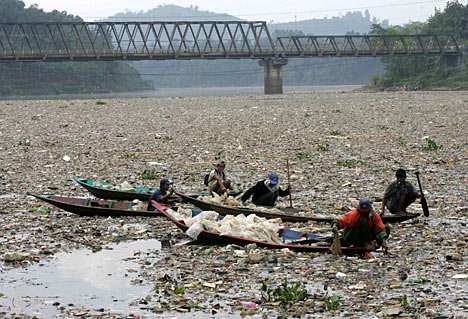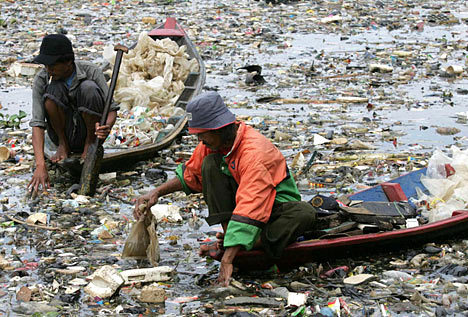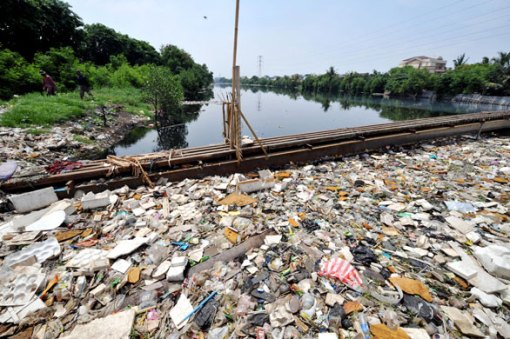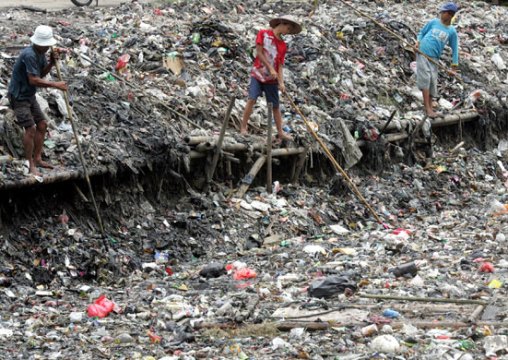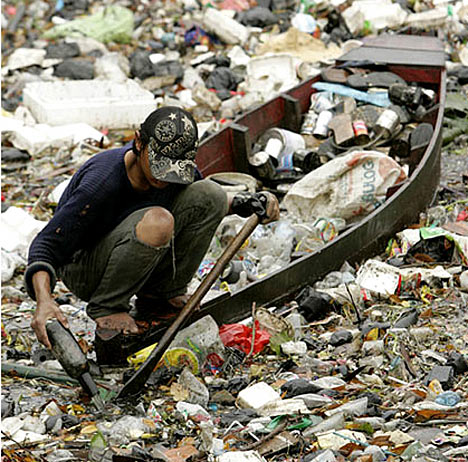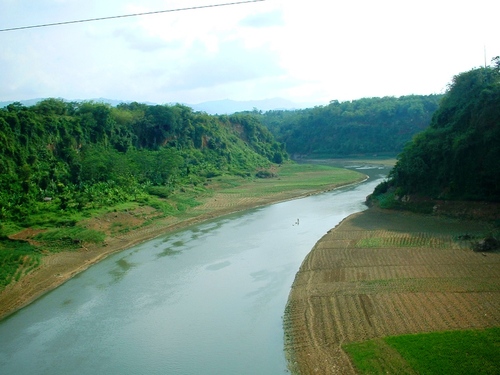Cambio Climático
El cambio climático es una realidad que se está manifestando con más rapidez y contundencia de lo previsto hasta ahora, y las consecuencias estamos sufriendo todos en forma de sequías, inundaciones, especialmente en los países en desarrollo como en las zonas de la costa del Río de Plata, Pakistán, Bilbao, Yucatán, Golfo de México.
Bolivia no aporta significativamente a las emisiones que causan el calentamiento global, dicen que su aportación es de sólo del 0,03%, pero este país comparte responsabilidades al no evitar la creciente deforestación y permitir la quemas de extensas regiones.
Argentina , no hay duda de que por ser un territorio, árido y semiárido en más del 50% de su extensión, sufrirá las consecuencias del incremento de temperatura y la fusión de glaciares y del hielo continental, además es un territorio que tendrá inviernos más templados veranos más sofocantes y una Ciudad Autónoma de Buenos Aires casi tropical, según sus asesores ambientalistas.
Chile habría un aumento en las precipitaciones en la zona altiplánica y en ciertas regiones del sur, cambios en el potencial forestal, nuevas plagas y enfermedades, zonas agrícolas afectadas, un aumento en las temperaturas del centro del país y una transformación del ecosistema marítimo. El cambio climático en Chile podría causar millonarias pérdidas.
Perú , las montañas andinas han perdido al menos 22% de su superficie glaciar desde 1970 y el deshielo está acelerando. Los efectos del deshielo son visibles. Rocas de color marrón se observan en las majestuosas cumbres cubiertas de nieve.
Colombia , La temperatura está en aumento por cuenta del cambio climático. En la próxima década algunas regiones, podrían aumentar su temperatura entre 2ºC a 4ºC, advierten los ambientalistas.
Esto significa que una ciudad como Bogotá podría llegar a una temperatura de clima cálido.
México tiene un compromiso de reducir su producción de emisiones en un 30% de aquí al año 2020. Ellos están luchando contra la deforestación y están reformando sus industrias, invirtiendo en infraestructura que no daña al medio ambiente. Un ejemplo a seguir.
Brasil, la quema de bosques en el Amazonas y otras regiones es un factor primordial en la producción de gases invernadero. Pero en realidad, EEUU . y China son los mayores contribuyentes de gases de efecto invernadero.
Todo puede evitar un cambio climático catastrófico si las temperaturas globales aumentan menos de 2ºC.
Estas son algunas cosas que deberían saber sobre el cambio climatico y sus consecuencias, para luego, poder accionar.
Medidas para evitar el calentamiento global
1.Transporte. Reducir el individual y promocionar los medios colectivos.
2. Energía doméstica. Disminuir su gasto con electrodomésticos de etiqueta energética o apagando los aparatos completamente (y no en modo standby).
3. Residuos. Favorecer la separación de basuras y el reciclaje.
4. Materiales. Reutilizarlos siempre que se pueda (papel, juguetes, herramientas, muebles…) y evitar usar bolsas, cajas y embalajes.
5. Agua. Reducir su consumo colocando, por ejemplo, botellas en las cisternas.
6. Riego. Minimizar el riego de jardines y promocionar el sistema por goteo.
7. Urbanizar. Sólo donde se sepa que habrá agua suficiente a largo plazo. En muchas ocasiones se otorgan licencias donde no hay agua.
8. Naturaleza. Respetar los espacios protegidos y minimizar el impacto en zonas naturales.
9. Casas. Construirlas con buenos materiales aislantes térmicos para que la inversión en calefacción y el aire acondicionado sea menor
10. Rendijas. Mejorar los aislantes en ventanas y puertas porque entre un 5% y un 10% del calor del hogar se escapa por ellas.
11. Paneles solares fotovoltaicos conectados a la red eléctrica.
12. Energías alternativas. Darles más valor y estar dispuestos a financiarlas. Si todos las apoyamos, serán rentables, aunque sean más caras.
13. Impuestos. Permitir que se asignen para la conservación de recursos.
14. Suelo. Minimizar los cambios de uso del suelo y, en general, del suelo artificial.
15. Impacto. Dar más importancia a los análisis de impacto ambiental y considerar otras alternativas costosas, pero ambientalmente favorables
16. Especies. No trasladarlas fuera de su lugar de origen.
17. Invasores. No soltar animales domésticos y mascotas. Pueden ser especies invasoras.
18. Productos químicos. Minimizar el uso de compuestos químicos como antibióticos, fertilizantes… y aerosoles.
19. Educar a los niños en el valor de los bienes que nos ofrecen los ecosistemas.
20. Gobiernos. Exigir la gestión sostenible a largo plazo de los recursos naturales.
[English version]
Climate Change:
Climate change is a reality that is manifesting itself more quickly and forcefully than expected so far, and the consequences we are all are suffering like droughts, floods, especially in developing countries as in areas of the coast of Rio de La Plata, Pakistan, Bilbao, Yucatan, Gulf of Mexico.
Bolivia does not contribute significantly to the emissions that cause global warming, a report says their contribution is only 0.03%, but the country shares responsibilities by not preventing the increased deforestation and allow the burning of large areas.
Argentina, there is no doubt that being an arid and semiarid territory, more than 50% of its length, will suffer the consequences of temperature rise and melting of glaciers and continental ice, is also an area that will have milder winters, sweltering summers and a city like Buenos Aires, almost tropical, according to environmental consultants.
Chile will have an increase in precipitation in the Altiplano and in certain southern regions, potential changes in the forest, new pests and diseases,affected agricultural areas, increased temperatures in the Midwest. Peru; the Andes mountains have lost at least 22% of their glacier area since 1970 and melting is accelerating. The effects of melting are visible. Brown rocks are observed in the majestic snow-capped peaks.
Colombia; tempereature is increasing due to climate change. Next decade, in some regions, temperature could increase between 2 º C to 4 º C!. This means that a city as it is Bogota, could reach a temperature constantly warm.
Mexico has a commitment to reduce its emissions output by 30% by 2020. They are fighting against deforestation, and they also are reforming their industries, investing in infrastructure that does not harm the environment. A good example to follow.
Brazil, the burning of forests in the Amazon and other regions is a major factor in the production of greenhouse gases, but actually, the U.S and China are the largest contributors of greenhouse gases.
Thought it would be good for everyone to know some facts about Climate Change and its consequences. It's important to learn so then you know how to take action.
Recommendations to prevent global warming:
1.Transport. Reduce the individual and promote the collective means.
2. Domestic energy. Reduce your spending with electrical energy label or off appliances completely (not standby mode).
3. Waste. Encourage waste separation and recycling.
4. Materials. Reused whenever possible (paper, toys, tools, furniture ...) and avoid using bags, boxes and packaging.
5. Water. Reduce your intake by placing, for example, bottles in the cisterns.
6. Irrigation. Minimize watering gardens and promote the drip system.
7. Urbanization. Only where it is known that water will be sufficient in the long term. In many cases licenses are issued where there is no water.
8. Nature. Respect protected areas and minimize impact on natural areas.
9. Houses. Built with good thermal insulating materials for investment in heating and air conditioning is less
10. Slits. Improve insulation in windows and doors for between 5% and 10% of household heat is lost through them.
11. Photovoltaic solar panels connected to the mains.
12. Alternative energy. Give them more value and be willing to finance them. If all the support, will be profitable, but more expensive.
13. Taxes. Allow the allocation of conservation resources.
14. Ground. Minimize changes in land use and, in general, the artificial soil.
15. Impact. Giving more importance to the environmental impact analysis and consider other alternatives expensive but environmentally friendly
16. Species. Do not move them away from their place of origin.
17. Invaders. Do not release domestic animals and pets. They can be invasive species.
18. Chemicals. Minimize the use of chemicals such as antibiotics, fertilizers ... and aerosols.
19. Educating children on the value of the goods that ecosystems provide us.
20. Governments. Require long-term sustainable management of natural resources.
[French version - Translated by / traducido por @shar0nD]
Changement Climatique
Le changement climatique est une réalité qui se manifeste plus rapidement et puissamment qu'attendu jusqu'ici et nous en subissont tous les consequences comme des sécheresses, des inondations, particulièrement dans des pays en voie de développement comme dans les secteurs de la côte du Rio de La Plata, le Pakistan, Bilbao,Yucatan, le Golfe du Mexique. La Bolivie ne contribue pas significativement aux émissions qui causent le réchauffement climatique, disent que leur contribution est seulement 0.03 %, mais le pays partage des responsabilités en n'empêchant pas la deforestation accru et en permettant la combustion de grands secteurs
L'Argentine, il n'y a aucun doute qu'étant un territoire aride et semiaride, plus de 50 % de sa longueur, subiront les conséquences de la hausse de température et la fonte de glacier et de glace continentale, sont aussi un secteur qui aura des hivers plus doux, des étés étouffants et une ville comme Buenos Aires, presque tropical, selon des consultants environnementaux
Le Chili aura une augmentation de la précipitation dans l'Altiplano et de certaines régions du sud, des changements potentiels dans les forets, des nouvelles maladies parasitaires, des secteurs agricoles affectés, des températures accrues au Midwest. Le Pérou; les montagnes des Andes ont perdu au moins 22 % de leur secteur de glacier depuis 1970 et la fonte accélère. Les effets de fonte sont visibles.
Des roches brunes sont observées dans les sommets couronnés de neige majestueux.
La Colombie; la tempereature augmente en raison du changement climatique.
La décennie suivante, dans quelques régions, la température pourrait augmenter entre 2 º C à 4 º C!. Cela signifie qu'une ville comme c'est Bogota, pourrait avoir une température chaude constamment.
Le Mexique a un engagement de réduire sa production d'émissions de 30 % avant 2020. Ils se battent contre la deforestation et ils reforment aussi leurs industries, investissant dans l'infrastructure qui ne nuit pas à l'environnement. Un bon exemple à suivre.
Le Brésil, la combustion de forêts dans l'Amazone et d'autres régions est un facteur majeur dans la production de gaz à effet de serre, mais en réalité,
Les Etats-Unis et la Chine sont ceux qui contribuent le plus au gaz a effet de serre.
Nous pensons qu'il est bien que tout le monde soit au courant de certain faits a propos du changement climatique et ses consequences car il est important d'apprendre pour savoir comment agir.

